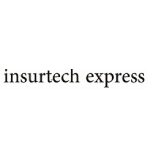Introduction
In an age defined by technological advancements, traditional industries are constantly adapting to keep pace with the digital revolution. The insurance sector, in particular, has witnessed significant transformations through the integration of cutting-edge technologies. Two of the most promising innovations in this space are blockchain technology and digital assets. In this article, we will explore how blockchain is revolutionizing the insurance industry and how digital assets are shaping the future of insurance.
Blockchain for Insurance
Blockchain, the distributed ledger technology that underpins cryptocurrencies like Bitcoin, is rapidly gaining prominence in the insurance sector. Its inherent characteristics, such as transparency, security, and immutability, make it an ideal solution for addressing various challenges faced by the industry.
Enhanced Transparency: Blockchain allows insurers to create transparent and tamper-proof records of policy contracts and transactions. This transparency builds trust among policyholders and insurers, reducing disputes and fraud.
Streamlined Claims Processing: Claims processing is often a complex and time-consuming aspect of insurance. Blockchain simplifies this by automating the verification of claims, ensuring that they meet the predefined criteria.
Fraud Prevention: Insurance fraud is a significant concern, costing the industry billions of dollars each year. Blockchain’s immutable ledger helps in the detection and prevention of fraudulent claims, saving both insurers and policyholders.
Smart Contracts: Blockchain enables the creation of self-executing smart contracts. These contracts automatically execute when predefined conditions are met, eliminating the need for intermediaries and reducing administrative costs.
Reinsurance and Risk Management: Blockchain allows insurers to manage and transfer risk efficiently through the creation of secure and transparent reinsurance contracts.
Digital Assets for Insurance
Digital assets, including cryptocurrencies and tokenized assets, are transforming the way insurance products are developed and offered.
Cryptocurrency as Premium Payment: Some insurance companies now accept cryptocurrencies as a form of premium payment. This provides policyholders with flexibility and opens up new markets for insurers.
Tokenized Assets: Assets such as real estate, art, and collectibles can be tokenized and insured on blockchain platforms. This allows for fractional ownership and easier insurance management for these assets.
Decentralized Insurance: Decentralized finance (DeFi) platforms are experimenting with decentralized insurance solutions. These platforms use smart contracts to pool funds and provide insurance coverage without the need for traditional insurance companies.
Improved Risk Assessment: The vast amount of data available on blockchain networks can be leveraged for more accurate risk assessment. Insurers can analyze transaction data and other blockchain-related information to better underwrite policies.
Conclusion
Blockchain and digital assets are reshaping the insurance industry, making it more efficient, transparent, and accessible. As these technologies continue to evolve, insurers that embrace them will be better positioned to meet the evolving needs of policyholders and stay competitive in an ever-changing landscape. While challenges and regulatory considerations remain, the potential benefits of blockchain and digital assets in insurance cannot be ignored. The future of insurance is undoubtedly being written on the blockchain, and it includes a wide range of digital assets as well.










